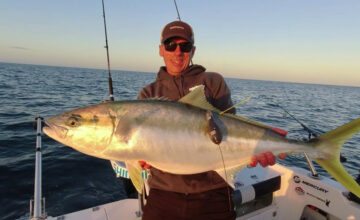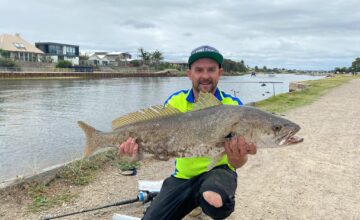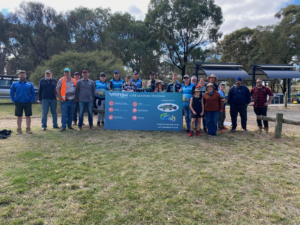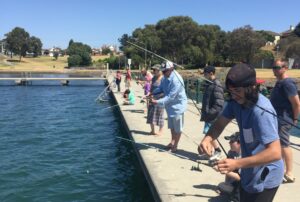October 20, 2015
by Lauren Veale, Nature Glenelg Trust
At a very early age, I was introduced to the world of fishing (thanks mum and dad) and vividly remember catching my very first fish (redfin) at Lake Bolac. In recent years, I have spent many holidays by the beautiful banks of the Glenelg River in the hope of catching one of those elusive mulloway the locals all talk about. Through this quest, I developed a passion for our aquatic environment, steering me towards a career in fisheries science. After obtaining formal qualifications, I quickly realised that no matter how much knowledge you gain through looking down a microscope or dissecting fish in the laboratory, the fundamental knowledge of a recreational fish species often rests between the ears of an angler. The term ‘citizen scientist’ is a relatively new term but old in practice. It relies on the collection of data from the natural world by members of the public. It promotes an understanding of science and empowers people to look after their own backyard.
With an increased number of anglers targeting mulloway across Victoria, now is the perfect time to learn more about this elusive but highly sought after species. Despite their occurrence across much of the state, few studies have focused on mulloway in Victoria. At Nature Glenelg Trust, we are undertaking research to learn more about the population structure and connectivity of mulloway stocks.
The research program, funded by Recreational Fishing License Fees, largely relies on the active involvement of recreational fishers. In comparison to other states, the commercial catch of mulloway in Victoria is minimal which limits the availability of collecting biological samples for research. However, with many anglers dedicating their life to catching mulloway, citizen science may hold the key to advancing our understanding of this species. Any angler can become a citizen scientist by donating their filleted fish frames to the research or by filling out an Angler Diary. With each filleted fish frame, we record the total length, sex and reproductive condition of each mulloway and extract the ear bones or ‘jewels’ from their skull and use these to determine the age the fish (see below).

Preliminary age data collected through citizen science indicate the majority of mulloway currently caught by anglers in Victorian estuaries are juveniles aged between 3-4 years, highlighting the importance of these estuaries during early life stages. Since the project began in August 2014, over 50 anglers have been involved in the researchand so far, we have received over 150 donated fish frames. For a full description of the preliminary research findings, download the Research Angler Newsletter from the Nature Glenelg Trust website.

Mulloway display very different life history traits across temperate Australia. For example, mulloway along the east coast mature at 3-4 years and live for around 24 years, whereas those in South East South Australia (SA) do not mature until 6-7 years and live for as long as 41 years of age. These differences reflect recent research, which defines four genetically distinct subpopulations or breeding groups of mulloway in Australia: Western Australia (1), western South Australia or ‘Yalata’ (2), South East South Australia including the Coorong (3); and southern Queensland and New South Wales (4). Unfortunately, fish do not conform to state boundaries and it is unknown whether Victorian mulloway constitute their own breeding group or whether they form part of adjacent subpopulations. The current research project is well underway to collecting the necessary genetic information to clarify these stock boundaries and determine the degree of dependency of Victorian stocks on recruitment from interstate waters- information that is critical to species management.
We encourage any angler with a passion for catching mulloway to get involved in the project by becoming a citizen scientist. You can join our Facebook Page for more information about the project and a list of drop-off points where you can donate your frames. Alternatively, contact Lauren Veale at the Trust directly by email [email protected].







